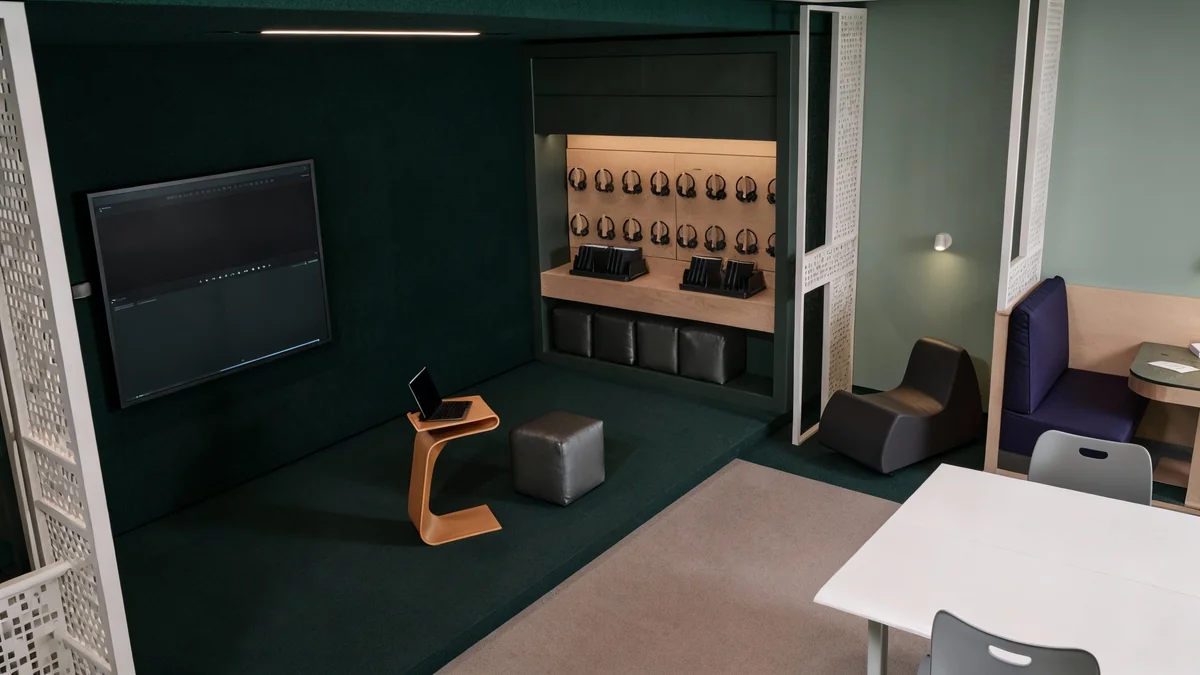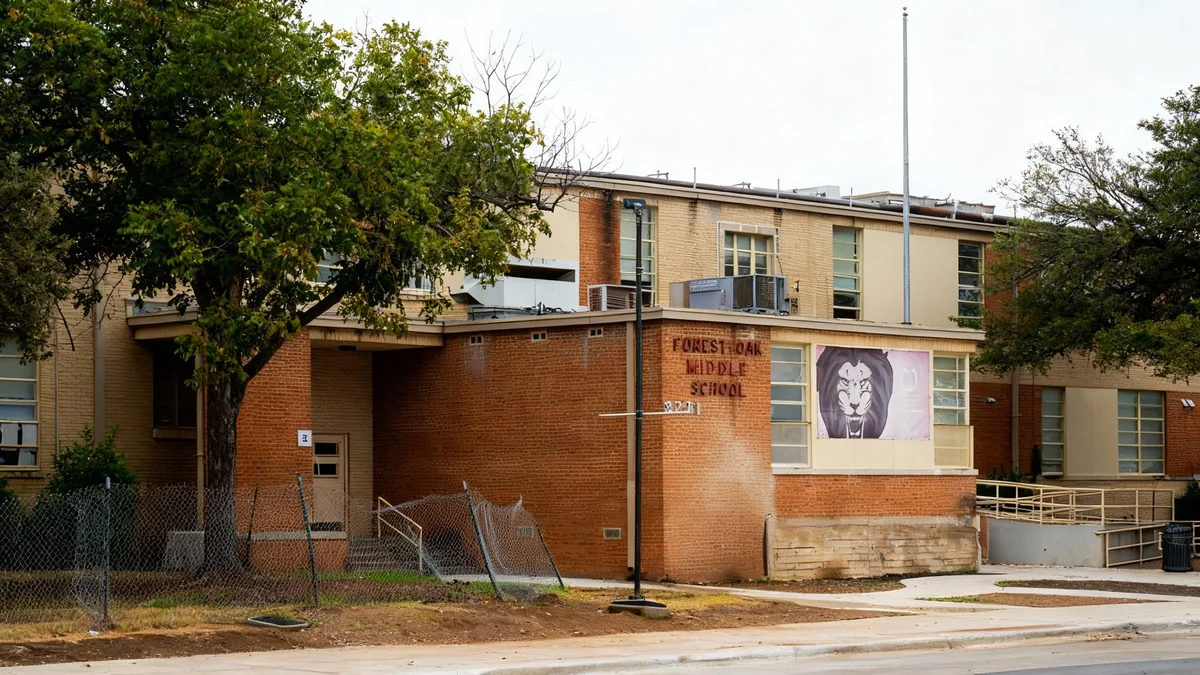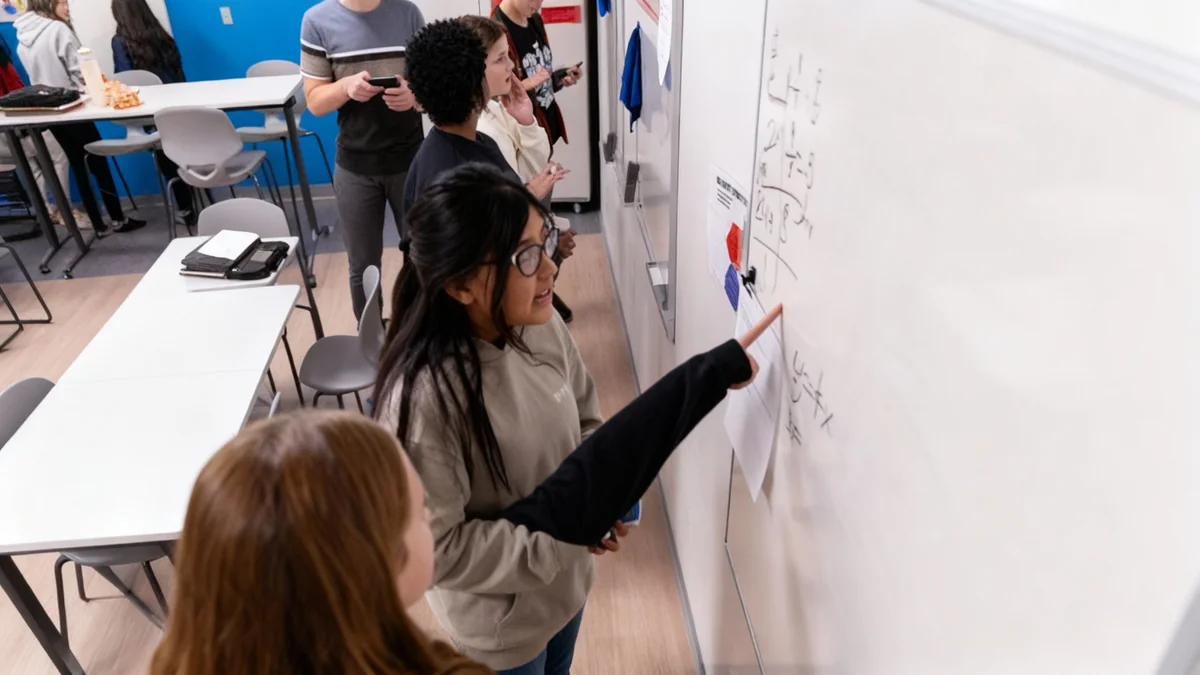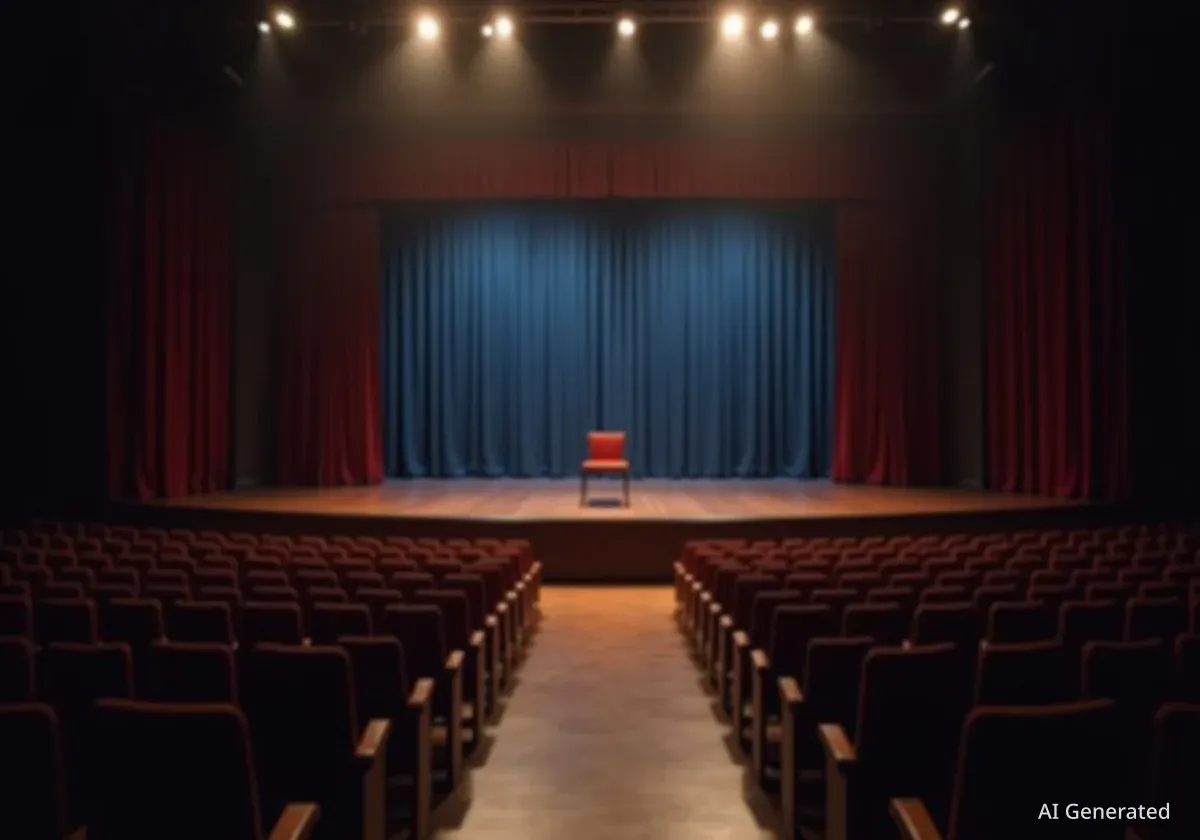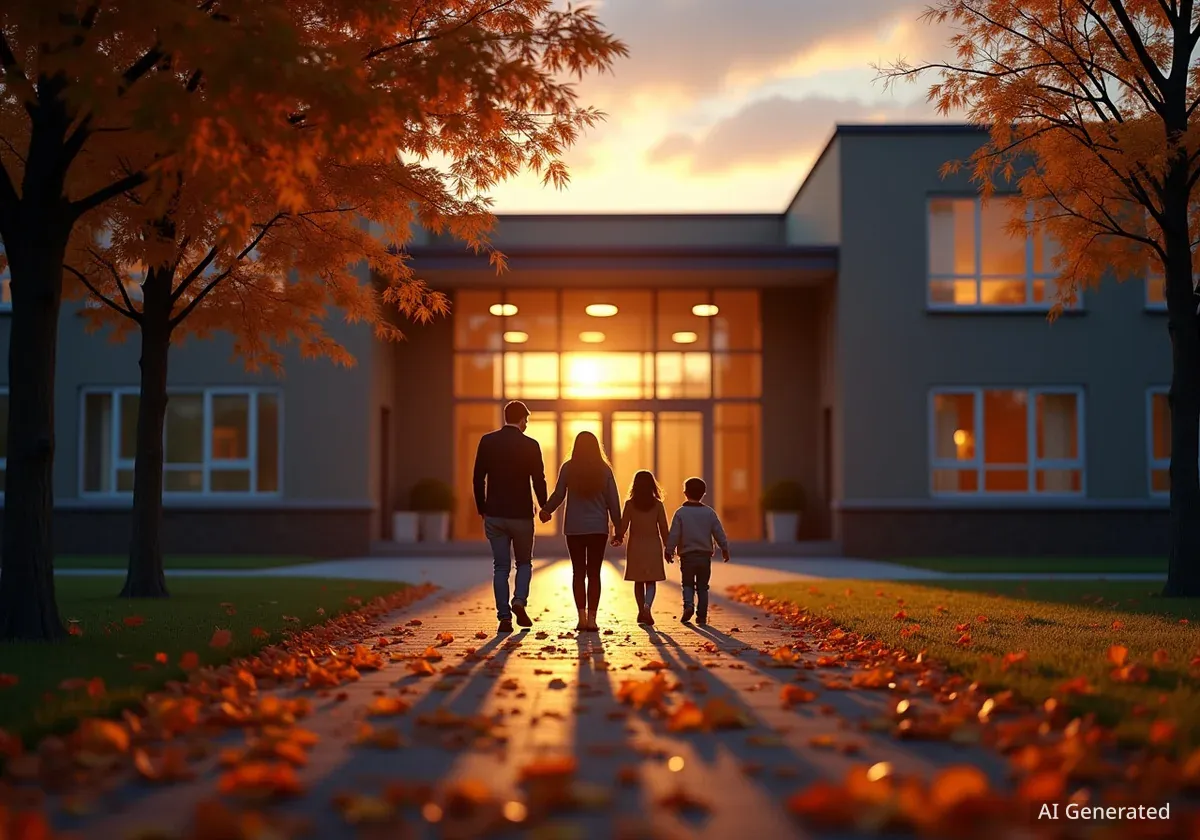A new classroom prototype has been developed at a high school in rural Alabama to address educational disparities by connecting students with expert teachers remotely. Designed by architect Danish Kurani, the "Connected Classroom" at Robert C Hatch High School uses advanced technology and a flexible learning environment to bridge the gap in teacher access often found in underserved communities.
The project, a partnership with the nonprofit Ed Farm and the State of Alabama, aims to move beyond the traditional classroom model. It focuses on creating a space that supports both virtual instruction and in-person collaboration, with the goal of creating a scalable solution for schools across the nation.
Key Takeaways
- A prototype "Connected Classroom" has been installed at Robert C Hatch High School in Alabama's Black Belt region.
- The design allows expert teachers to provide remote instruction to students in rural areas lacking specialized educators.
- The classroom features flexible furniture, advanced video conferencing technology, and materials chosen to promote focus.
- A local teacher remains in the room to provide support, creating a hybrid learning model.
- The project was developed in consultation with students, educators, and community leaders.
Addressing a Critical Need in Rural Education
The initiative was created to tackle long-standing challenges in rural education, particularly the difficulty in attracting and retaining qualified teachers in specialized subjects. According to architect Danish Kurani, many rural schools are limited by outdated infrastructure and a lack of access to expert instruction.
"As the United States grapples with rebuilding a more equitable and resilient educational system, glaring disparities in rural school infrastructure and access to qualified teachers have come into sharp focus," Kurani stated. He noted that the traditional classroom layout, with desks in rows and harsh lighting, is often not conducive to modern learning needs.
The Connected Classroom project directly confronts this issue by leveraging technology to bring expertise into the school without requiring the physical relocation of specialist teachers. This model provides students with opportunities they might otherwise miss.
The Alabama Black Belt Region
The Black Belt is a region in Alabama known for its rich history and cultural significance, but it also faces significant economic and educational challenges. Schools in this area often struggle with funding and teacher shortages, making innovative projects like the Connected Classroom particularly impactful for the community's students.
A Closer Look at the Classroom Design
The prototype classroom at Robert C Hatch High School was designed to be a calm and focused environment. The space intentionally avoids the visual clutter common in many traditional classrooms, instead using a simple color palette of green and blue to create a serene atmosphere.
The room is equipped with a large, wall-mounted screen at the front, which serves as the primary portal for remote instruction. Multiple cameras are strategically placed to give the remote teacher a comprehensive view of the classroom, fostering a sense of presence and enabling them to interact effectively with students.
Technology and Support in Harmony
A key element of the model is its hybrid nature. While an expert teacher leads the lesson via video conference, a local teacher is always present in the classroom. This in-person facilitator provides hands-on support, manages the classroom, and assists students with their work.
"The arrangement allows local staff to gain new skills and exposure to advanced content areas, so the benefits extend to them as well as students," explained Kurani.
Students have access to tablets and headphones, which are stored in a custom wooden unit. This ensures every student has the necessary tools to participate fully in digital lessons and individual activities.
Flexible and Sustainable Learning Spaces
The furniture within the Connected Classroom is modular and highly flexible, a stark contrast to the rigid rows of desks in older models. This allows the room to be easily reconfigured for various activities, such as group projects, individual study, or full-class presentations.
Seating options are diverse to accommodate different learning styles and preferences. The room includes:
- Traditional desks facing windows for focused individual work.
- Rocking chairs and booth seating for comfortable laptop use.
- Beanbags for informal learning.
- Bleacher-style seating that doubles as storage.
- Modular central tables for collaborative group work.
Eco-Friendly Materials
Sustainability was a core component of the design. The walls are lined with a sound-absorbing fabric made from 100% recycled polyester, and the dual-tone carpet tiles are manufactured from recycled plastic bottles. The main storage unit was crafted from wood sourced from a fallen ash tree.
The lighting system is designed to mimic natural sunlight, which helps keep students alert and focused. The lights are also adjustable, allowing them to be dimmed for presentations or brightened for detailed work, further enhancing the room's adaptability.
A Community-Driven Approach
The final design was not developed in isolation. The project involved extensive community consultation to ensure it met the actual needs of its users. Kurani's team gathered input from 22 students from local schools, analyzed data from 10 different rural schools, and held discussions with educators, community leaders, and technology experts.
"This wasn't just a classroom designed for a community — it was built with it," the architect said. This collaborative process was crucial in creating a space that is both functional and embraced by the students and staff who use it every day.
The ultimate vision for the Connected Classroom is to serve as a blueprint that can be scaled and replicated in other under-resourced rural districts across the United States. By combining thoughtful design with accessible technology, the project offers a promising model for improving educational equity and opportunity for all students, regardless of their location.
